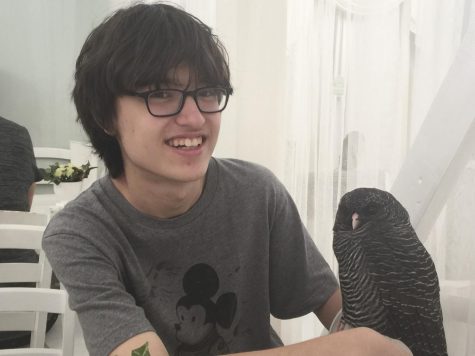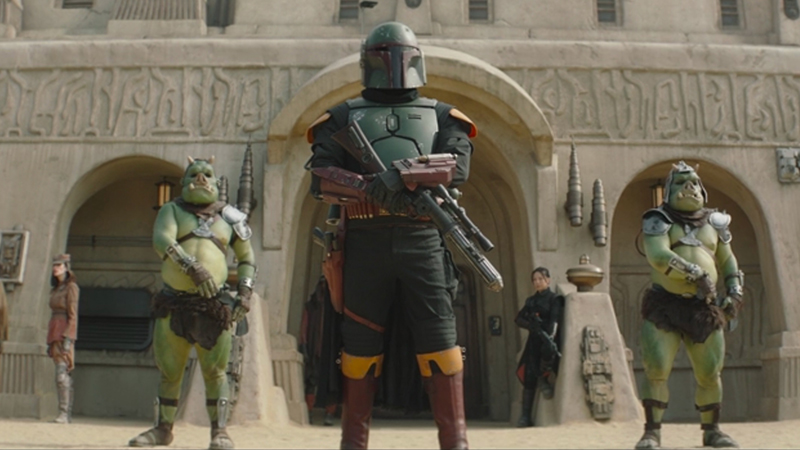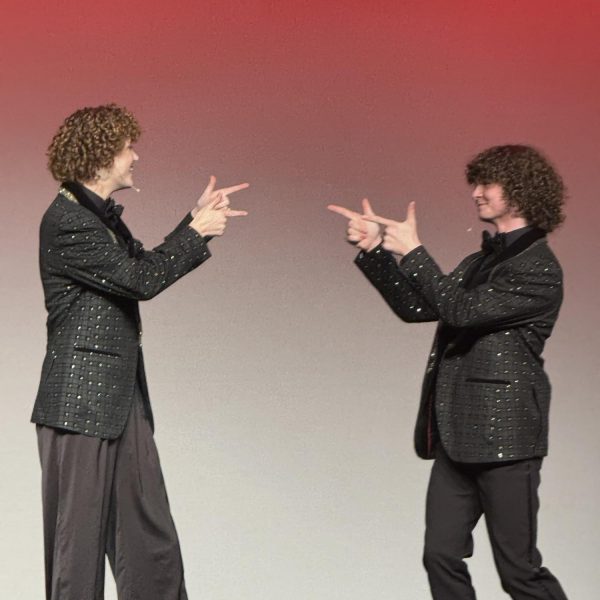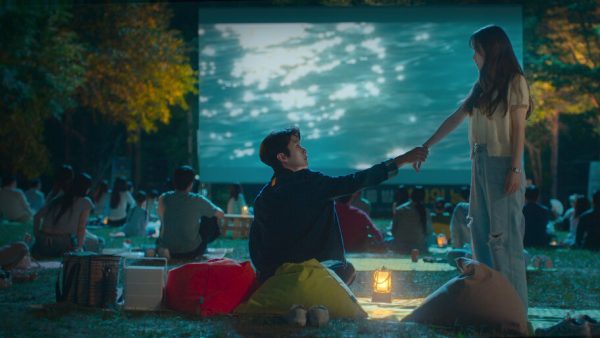Book of Boba Fett
The new Star Wars series The Book of Boba Fett is a clumsy second to its predecessor, The Mandalorian.
As a colossal media giant, the Star Wars franchise is in constant flux, with every new addition to the series pushing it in a new direction.
Of these recent additions, one of the most important and acclaimed was “The Mandalorian,” a TV series which has received two seasons on the Disney+ streaming service.
“The Mandalorian” was praised for capturing what made Star Wars special, with endearing characters, a compelling story, a fleshed-out universe, and as always, flashy special effects, while still showing an exciting glimpse into the future of Star Wars.
“The Book of Boba Fett” is Star Wars’ second go at a live action streaming show, but compared to the heights of its predecessor, it represents an experience that can only be described as disappointing.
As a character, Boba Fett is a curiosity. The galactic bounty hunter is easily one of Star Wars’ most recognizable (and certainly most marketable) characters, yet received only four lines during his debut in Empire Strikes Back, before being unsanctimoniously “killed” at the start of Return of the Jedi. But despite his scant live action appearances, Boba Fett’s popularity skyrocketed.
With the renewal of live action Star Wars productions, the question wasn’t if Boba Fett would be brought back, but when.
The answer came in the second season of “The Mandalorian,” with Boba Fett, portrayed by Temuera Morrison, coming to the aid of the titular character, followed by the announcement he would be given his own series.
After his return, Boba Fett regained his trademark armor but received several major design changes, making it clear this would be a new era for the character.
Unfortunately, The Book of Boba Fett fails not only to provide a foundation for that new era, but for the character as a whole.
The Book of Boba Fett thrusts a blank slate of a character into an even larger blank slate of a setting. No matter how much characterization he might have received outside of mainstream Star Wars content, to most audiences, his role in the franchise has mainly been to look cool.
The Book of Boba Fett struggles to prove his other angles are more captivating. As is stated repeatedly, Boba Fett’s goal is to assert his role as the new Daimyo (or crime lord) of the planet Tatooine, but as a nice one rather than mean one, using his role to help the common folk rather than exploit them.
Why? That’s a bit harder to say.
The Book of Boba Fett is divided into two (later three) parts: Fett’s flashbacks to his time after Return of the Jedi when he’s adopted by a tribe of Tusken Raiders, and his aimless ventures as a wannabe crime lord. Both feel wholly unsatisfying.
There’s no cohesion between either, and barely any cohesion within the parts themselves. Long stretches are spent doing nothing but walking (or riding a bantha, possibly the slowest creature in the galaxy).
The scenes set in the present go from one to the next, without any buildup or payoff in sight. Those set in the past do occasionally carry some emotional depth, designed to explain how Fett developed his soft side, but they either struggle to remain interesting or are executed so clumsily it distracts from any perceived meaning.
In a word, the series can be described as clumsy. Like Boba Fett, the plot clumsily meanders around and around for seemingly no purpose, eventually reaching a flashy but unsurprisingly shallow and poorly executed ending. Events are clumsily placed, padded with a distracting amount of fan service and characters handled equally as clumsily.
For example, a group of droid teenage delinquents are introduced halfway through the series, and I’m still unsure if they were wasted potential or additions that should never have been added in the first place. Action sequences are clumsy, with some feeling like they take place underwater.
Dialogue is clumsy, as characters seem determined to push past whatever realm of possibility existed concerning made up slang terms and swear words. Special effects are clumsy too, without nearly the level of polish that was found in the Mandalorian.
You get my point.
Yes, some of these issues were likely caused by the pandemic, particularly the special effects and some of the more messy plot points. But most seem like the result of a poorly developed and directed protagonist. The proof lies in episode five, which abruptly diverts the focus of the series to follow The Mandalorian.
It stands out not because it’s the most visually stunning episode. Not because of its cameos (and heavy fan service) but because I was actually interested in following its main subject.
Even when constantly obscured by a helmet, the Mandalorian was a familiar “face” who I enjoyed watching, who I felt invested in, and whose next steps I actively anticipated. It pains me to say that I often felt the opposite when watching Boba Fett. Episode five reeks with an unmistakable stench of irony, as Star Wars’ former model mandalorian is outdone in his own series.
A $50 or more donation includes a subscription to the Clayton High School Globe 2024-2025 print news magazine.
We will mail a copy of our issues to the recipients of your choice.
Your donation helps preserve the tangible experience of print journalism, ensuring that student voices reach our community and that student democracy thrives.

Isaac is a senior at CHS and a page editor for the Globe. This is his third year on the Globe staff, which he joined to write stories for his own enjoyment and the entertainment...







